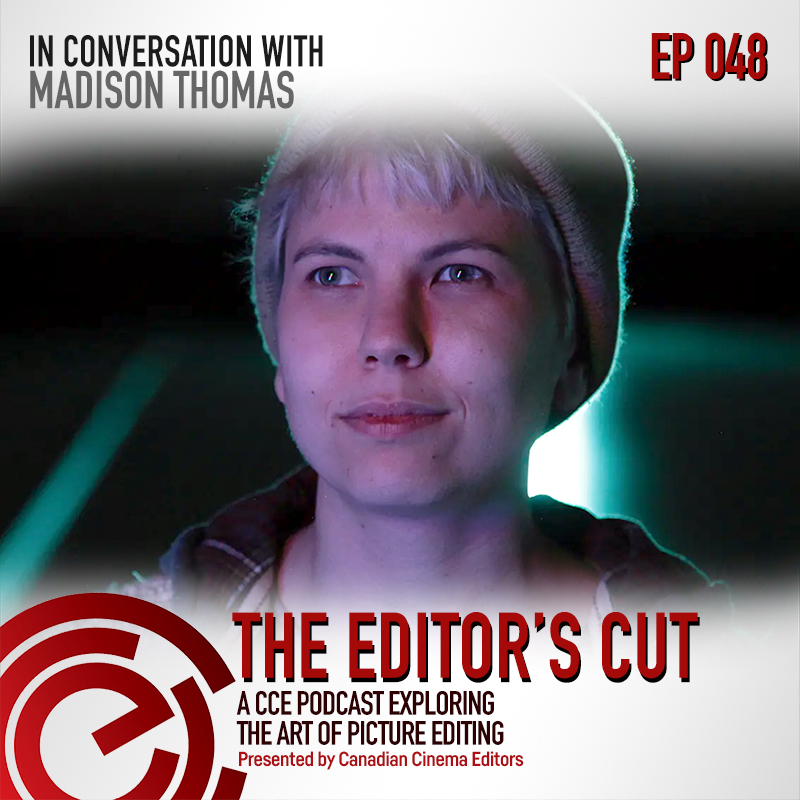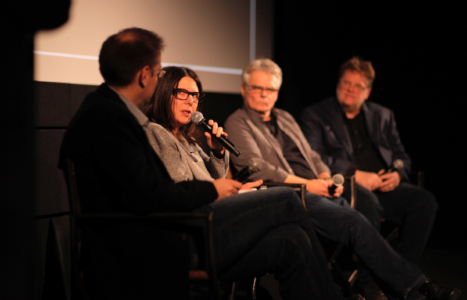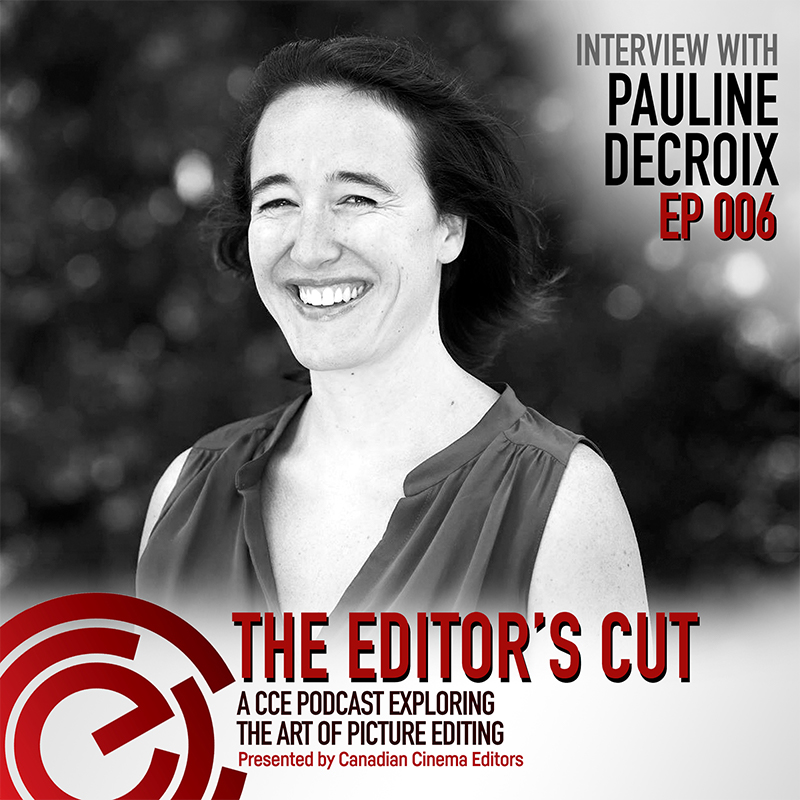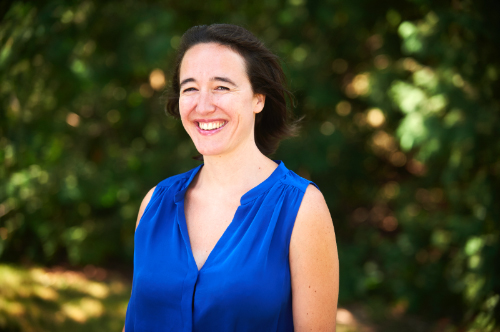The Editor’s Cut – Episode 048 – Interview with Madison Thomas
Madison Thomas:
One of my tricks is, especially if I’m struggling with an edit, I’ll go in and I’ll cut a scene that I’m very
confident about and I know I can bang it out.
Sarah Taylor:
This episode was generously sponsored by Annex Pro Avid.
Hello, and welcome to The Editor’s Cut. I’m your host Sarah Taylor. We would like to point out that the
lands on which we have created this podcast, and that many of you may be listening to us from, are part
of ancestral territory. It is important for all of us to deeply acknowledge that we are on ancestral territory
that has long served as a place where indigenous peoples have lived, met, and interacted. We honor,
respect, and recognize these nations that have never relinquished their rights or sovereign authority
over the lands and waters on which we stand today. We encourage you to reflect on the history of the
land, the rich culture, the many contributions, and the concerns that impact indigenous individuals and
communities. Land acknowledgments are the start to a deeper action.
This episode is the Master Series that took place on August 27, 2020. In conversation with Madison
Thomas. Named one of Playback’s 2019, 5 to Watch. Madison Thomas is a writer, director, and editor
from Winnipeg, Manitoba. Her work reflects her mixed cultural roots, Ojibwe, Saulteaux, Russian and
Ukrainian. Thomas draws inspiration from experiences growing up in the inner city and has committed
herself to diverse representation in her work. Today’s episode offers a look at a unique and impressive
career in which Thomas has often taken on multiple roles and frequently edits her own work. This event
was moderated by award-winning filmmaker, Cazhhmere.
[show open]
Cazhhmere:
Hi everybody. My name is Cazhhmere. I’m a filmmaker. I tell stories of many, many different formats.
Everything from music videos to commercials, documentaries, short films, long-form narratives, and
anything and everything in between. And I am today joined with my lovely friend and co-creator on
some projects, my friend Madison Thomas, filmmaker extraordinaire. I like using big words like that.
Madison Thomas:
I like it.
Cazhhmere:
Yeah, so we’re here today as part of the Master Series. We’re going to be talking about editing, but it’s
going to be a little different because Madison and I we are both directors first, editors second, I guess we
will say, but we’ll get into the story of how we became editors. I won’t necessarily say we became editors
by necessity, but part of it does have to do with that, but before we get into that, I’m going to let
Madison introduce yourself.
Madison Thomas:
Right on. Thanks Cazh. Thanks so much for agreeing to chat with me today. Super, super happy to be
here. So my name is Madison Thomas. Like Cazh mentioned, I am both a director and editor. I also write.
[foreign language 00:02:52]. And yeah, I’m a filmmaker. First and foremost I would say storyteller, really
because film’s the medium I use the most. But storytelling is very much how I describe myself and how I
like to carry myself through the world and what I think my gift is, in theory, but yeah. So like Cazh
mentioned, I am a director first. Writing and directing are both loves of mine, but a bit of my journey,
editing has become a big part of it, so.
Cazh, I know that’s been your journey as well. I know we chatted a little bit about this before, but
chicken before the egg. Which one came first for you? For me, my first paid gigs were editing and I was
doing directing alongside, so the journeys were the same for me. And I got a little bit of background
during high school, I was lucky enough to attend Sisler High School in Winnipeg’s North End. Which is a
pretty large school, even though we were in inner-city with a lot of low-income kids. We did have a
pretty robust program and an amazing teacher that came in, in my Grade 10 year named Jamie Leduc,
who really built a film program from scratch. Gave me my first exposure that way. My first paid gigs were
editing, so I had dual entry. Was it the same for you?
Cazhhmere:
Me? No, actually. My first paid gigs were music videos.I sort of became a filmmaker by fate, I guess. You
know what I mean? Growing up, all I ever wanted to do was make music videos. That was it. That was
the end-all, be-all for me. Music videos, music videos. That’s a whole long story of how I got there, but
dream came true. I ended up being very fortunate enough to make music videos.
I was born in Halifax so when I came here to Toronto after a long journey, working with music
and stuff, I was able to start making music videos gratefully to Much Fat, which was called Video Fat at
the time.
I started editing simply because it first started as a suggestion through a mentor of mine and
another fellow Canadian director by the name of R.T. Thorne. Shout out to R.T. We had a music video
company together, and he and a friend of his, and I was a director on their roster. We were, I would say
in hindsight, at the height of our music video careers or just on the brink of it, I should say, but I wasn’t
getting what I wanted out of my music videos.
I just didn’t like them for some reason. I knew how I wanted them to look, but when I saw them
on TV, this is when they were still playing videos on TV, I wasn’t proud of them. People saw them. Looked
great, had great cinematographers, were shooting on film, all that sort of stuff at the time. Everything
was there. I had all the tools that you needed to make a great video. I just wasn’t pleasing myself.
R.T. said, “You should try cutting your music video. Editing gives you a different eye, a different
perspective. You know how to cut it. I sit in every session through hours and hours with my editor,
saying, ‘No, do this, do this, do this, let’s try this.'” He’s like, “You know what you want, so how about
you try and physically do it yourself and see what happens?”
He’s like, “You might try to see your stuff differently on set. You’ll start to see your edits while
you’re on set. All that sort of stuff.” And he was right. I started to get what I wanted out of my videos for
a number of reasons.
A lot of it was because, even as I was writing treatments, I could see it playing from start to finish
in my head and know exactly how it was going to be, so from the treatment to the shot list to the
storyboard to being on set and executing the shots. By the time I’m in the edit room, I already knew. The
video could just edit itself because there was some magic button. You know the auto button? If there
was just auto edit, it could do it. So that’s when it started.
And then it became a consistent thing out of necessity just because, especially in the music
world, we all know as the internet started to dominate the world, it affected a lot of things. Particularly
music industry, film industry, budgets, and stuff. People were spending less money on things, and in the
totem pole of filmmaking, music videos sits very low, and naturally their budgets suffered the most.
So there just wasn’t any money for editors. If I still wanted to make music videos look big and
grand and feel … We’re in Canada, so budgets were already small. But at a time, like I said, much music,
if you want your videos to play against other US artists, it’s going to look a certain caliber. It takes a lot of
going through corners and bending over backwards and cutting corners to make that stuff happen.
Madison Thomas:
Yeah, it’s like you mentioned, caliber because that was a big part of it. So mine wasn’t very much focused
on visuals. Yes, I wanted to control how the visuals were communicated. But for me, because I come
from a bit of a narrative background, especially my Indie days really making something out of nothing. As
you know, having to work in both narrative and documentary, it’s a little easier to do that with
documentary.
Cazhhmere:
For sure, yeah.
Madison Thomas:
Low budget is a little more accepted. So, for me, the caliber was, okay, the little budgets that I do have,
the little arts grants that I do have, I want to put all that on the screen.
Cazhhmere:
Exactly.
Madison Thomas:
Why I’m going to learn how to edit and why I’m going to make that such a big part of my skill set, is that I
don’t have to spend money on someone else doing that then.
Cazhhmere:
Yeah, that’s what it was. Now that I knew how to edit my videos and get what I want out of it, when it
came time to money like you said, you want to put all of that on screen. So honestly, it was like I’ll just do
it myself. Fine, I’ll cut it myself. Take whatever amount it was out the budget for the editor, cut it out. I’ll
do it. It still sucks, because I’m still now doing twice the work for one check as opposed to the work of
two checks. But that’s really how it came about.
Madison Thomas:
That’s what you do when you’re an artist, I feel.
Cazhhmere:
But I feel like that was our transition because especially in filmmaking now, that was maybe at least 10
years ago, probably more that that transition started. But we’re in an era of filmmaking where it’s very
much a do it yourself era.
Madison Thomas:
A hundred percent.
Cazhhmere:
Until you get to the big budgets. So I feel like we look at it as a necessity then, but it was setting us up for
what’s now become the norm in a sense.
Madison Thomas:
Totally.
Cazhhmere:
So I want to ask you a question. We’re talking about how learning to edit as a necessity was also a step
into learning more about the storytelling process. So explain how that statement is true for you in your
experience of becoming an editor?
Madison Thomas:
For sure. With a lot of my early editing gigs, they were generally like assistant editor or eventually
moving up to junior and senior editor for documentary films. I think my first love as an artist was to make
narrative films. Then that whole process of writing, casting, that whole thing. Because I think that’s also
very much the classic story of filmmaking, like the general populace is sold, that’s what they’re told. The
glitz and glamor of it, so obviously I was very attracted to that especially coming from a poorer
background.
I had no family in film. I had no family in the arts, period. I am by far the black sheep of the
family. I have a couple of younger cousins finally being weird and artsy, finally. So I had zero idea of what
this industry was other than what this high school teacher had taught me.
So getting into editing via documentary was super interesting because it’s so not the form of
storytelling you’re told. But I’ve found I took to it really naturally, actually. Telling things non-linear,
abstract representations and ideas that were being presented from the interviews.
One of my very first gigs and one I’m very thankful for, I think was fundamental to my journey as
a filmmaker, was working on the TV series Taken. It was a docu-drama series and it explored the missing
and murdered indigenous women and girls here in Canada. And in our final season we actually looked at
two-spirited men as well.
And with sharing their stories, both in a documentary format with their families sharing their
stories both of their case, the disappearance, or their murder. But also who they were as a person, who
they were when they were a kid and who they were going into adulthood if they got that far. But it was
really interesting being able to work on a hybrid show like that, where we had the classic documentary
storytelling but we also had recreations. They were told but in non-classic, where we did a lot of that
abstract work and stuff.
And for a long time I didn’t really understand why that came so naturally. It was one of those
interesting things as an artist’s journey, you can realize things in retrospect. But I realized that going to
Prague actually. So I was lucky enough to attend Prague Film School in 2011 while I was going to
university. That same high school film teacher actually was like-
Cazhhmere:
Fancy place to be going to school.
Madison Thomas:
Pretty fancy place. I got very, very fortunate. I was the first Canadian Indigenous person ever to attend.
Cazhhmere:
Awesome.
Madison Thomas:
My first high school film teacher, Jamie Leduc … I was going through my first year at the University of
Winnipeg. And not knocking UW by any means. It’s got a special place in my heart and I did learn a lot
there, but he saw that I clearly wasn’t getting out of the film program what I was looking for. Which was I
think at that time just looking to who I was as a storyteller and how I was different and molding that
part. So I think he saw. He’s like, “You need to go somewhere where they’re going to focus on that.”
And Prague had a Summer intensive program. You basically did a year of film school in a
condensed three months. And my editing professor there was actually the senior editor of Friends for
eight seasons. And so a very interesting person to be teaching at this very prestigious arts film school.
However, he went on after Friends to edit some very, very prominent European films. And he really
talked about his process just in terms of how he stayed sane editing a sitcom with fixed cameras and
fixed angles all the time. And it was all about his philosophy in editing.
I mean we chatted about this a little bit briefly in some of our collaborations, Cazh, but the idea
of the ghost in the room. So his philosophy and I’ve definitely brought this forward into my editing. I find
it very useful because I think especially if you come from a more of a technical background when it
comes to editing, you can get very bogged down by the 180 rule. Cutting from a wide down to a
medium. Those conventions that were taught.
Cazhhmere:
Things as a director I don’t understand. This is a math class, I like the shot, put it there!
Madison Thomas:
Exactly. If it feels right, it feels right. And that was a big part of his philosophy. Imagine you’re a ghost in
the room and I think this gets a little bit more complex when you get into perspectives and different
styles of editing which I really worked on with Ruthless.
But his concept was when in doubt, if you’re the ghost in the room, what is your eye drawn to?
That’s what your next cut should be. So his example was always someone walks into a room holding a
book. Well, I’m interested in the room at first. Where is this person? What are they walking into? Is it
dark, is it warm? Is it inviting? Do they know this place, do they not? I think even if you’re a technical
editor you have to ask yourself those storytelling questions, because that’s what the audience is going to
be asking.
And so a person walks into a room with a book. They put the book down and they open the
book. Well, I’m very curious what the hell this book is. Got to a cut of the book if it’s interesting. Now I’m
actually curious about what that girl feels about the book. Is she curios about it, is she scared by it, any
of those things? So a lot of his philosophy had to do with focusing on the emotion. And that was how he
stayed sane editing Friends was as long as he could focus on that, it didn’t matter that it was the same
cuts and shots. He can always make it interesting and alive because there was always feelings.
Cazhhmere:
I want to talk about Taken again. So through editing on the show Taken, you ended up directing on this
show as well, right?
Madison Thomas:
Yeah.
Cazhhmere:
Tell me about that and how editing on the show beforehand prepares you for this new task now as
director on the same show and just as a director in general?
Madison Thomas:
Totally. So as I was saying before while I was getting these, while I was my paid gigs were editing
documentaries and stuff. I was also doing a lot of narrative, Indie, no-budget, very low-budget stuff at
the same time. So it was like exercising both muscles quite a bit. So my co-workers knew that I was also a
director, that was a big part of it. I told them I was a director, that’s also I think a thing a lot of young
filmmakers really struggle with is actually voicing what they want to do in this industry. Because your first
job is very generally not where you want to end up, unless you’re lucky or have a lot of money I guess.
I made it very known that I was a director and I wanted to direct narrative as well as
documentary. So first of all, my producers and bosses knew that. But in terms of as a storyteller within
Taken because I was editing it when you’re a senior editor especially and you’re overseeing all the
episodes. That was 13 per season. I worked with 13 different directors. I learnt a bunch of different
styles. It was actually incredibly good training. You see what they pick, you see how if they did cover
something properly they had enough material to cut the scene together. If they didn’t, you were
struggling as the editor, you had to find creative decisions. So it was actually very interesting backwards
training that way in terms of what material to get.
But when the opportunity came up and funnily enough, this is how a lot of opportunities come
up in film, I think is someone unfortunately got fired from one of the directors, mid season. With the
show having such sensitive topics, they were hesitant to bring on someone who completely didn’t know
because they were interviewing with the family members, that relationship had already been established
with the other director. However having been part of the show and very familiar with the episode and
what the story we already had, the producers felt confident in asking me to just take on the second-half
of directing that.
Cazhhmere:
Sure, who’s more familiar with the show then the editor who’s seen everything?
Madison Thomas:
Yeah, all the episodes, not even just a particular episode.
Cazhhmere:
Yeah, actually speaking of which, there’s a question from the audience that while we’re talking about
editing, you being an editor on a TV show before working as a director on a TV show. So I just want to
answer this question because it will tie into … The question is, what is the role of an editor in
pre-production? So given that you were an editor on Taken on the show, what involvement did you have
if any in the pre-production of Taken? Or if not, just what is the role of an editor in pre-production on any
project really?
Madison Thomas:
For sure. So I would say from the documentary point-of-view, generally the only person from
post-production that will come on, really early in the process will be … In narrative film they’re called the
DIT, the digital imaging technician. We usually say editing assistant or something along those lines, or
media manager in documentary. So they’ll generally come on very early on because the way a
documentary is filmed is generally in huge chunks.
In Taken, we would film a season over eight months because we would do interviews spread
over the year because we are going across Canada getting interviews. And then we would do recreations
of classical film shoot all in one week. We did a shoot in Winnipeg, we did a shoot in Victoria. So it was
all very interspersed so collecting that footage was a really fundamental job from day one of
development. That would generally come on then.
However, after season one because I was such a big part of both editing and directing I would
generally stay on from early days of development until the end. So on that particular show, I as the editor
had a say in certain things from early on. I would say, and Cazh, tell me if you had a different experience,
generally in post-production isn’t super involved until generally footage starts really rolling in.
Cazhhmere:
Yeah, until footage starts really rolling in or I guess especially because having the editing experience and
directing experience if I’m thinking of some crazy stuff especially coming from a music video where we’re
all about aesthetics. So the crazier the shot, the crazier the angle, the better. My mind can tend to go
there with narrative stuff because I’m a storyteller but I’m also visual so I want it to look pretty and nice
too. So if I’m thinking of a crazy shot and especially if my producer or my DP or both are giving me some
push on it. I might go ask my editor, to be like, “Am I crazy? Tell them this shot works. Tell them, tell them
this works. Tell them it’s going to make sense.” It’s going to cut seamlessly and I’m not just being abstract
for the sake of being abstract or whatever the hell. You know what I mean?
Madison Thomas:
Totally.
Cazhhmere:
So if it’s something more intricate like that. And if it’s just some straight forward documentary or just a
straightforward narrative or anything, yeah, I probably wouldn’t feel the need to involve my editor too
much. We’ve had some discussions, because I’d be like my shooting style and pasting and all that still
takes a part in it,right? So I’ll probably just have some conversations, preliminary chats with the editor
because obviously I’m not just going to pick any editor to cut whatever it is.
So I’ve obviously picked them for a reason because of our styles and where I see things going in
lines whatever that may be. So we’ve already had chats. And then I may pick their brain a little bit as I’m
planning out different shot lists and things like that. But it’s pretty much conversation, it’s not like they’re
involved in full on pre and pro-meetings or things like that.
But there are some cases where they are. When you’re dealing with something that’s a lot of CGI
and effects going on, that’s a whole different ball game. Then the editors are very much involved in the
pre-, pro-process.
Madison Thomas:
Totally. But yeah. I mean I think that’s just good practice no matter what end of things you are on, if
you’re a director hiring an editor or if you’re an editor working with the director. Or if your case like me,
it’s where I edit most of my own work. I’ve had a couple instances as the director where someone else
has edited my work, generally, more director-for-hire gigs. But generally the things that are made by me,
developed by me to fruition, I generally edit.
I’ll get into a little bit more when we get to Ruthless, but I think I’ve realized my line with that is
features. For my next feature I will have a big hand at editing it however I do want to bring on a second
person just for those fresh eyes and fresh creative part of it. As my stories get bigger, I’m finding I’m
going to need that extra creative person.
Cazhhmere:
For sure. Absolutely. Since we’re talking about all this visual stuff and everything, I want to talk about
some of your work, your actual work. We’ve seen you reel, but let’s dive into all this experience that
we’re talking about and let’s see it in action.
Madison Thomas:
This is my narrative web series, released in 2018. It’s called Color of Scar Tissue. We made this under the
funding with the Imaginative and APTN Web Series Pitch Contest. I’ve had to say that so many times in
interviews that I’m good at it now. On the day when I was trying to thank the sponsors, I had the biggest
queue card ever because it’s such a mouthful.
But it was wonderful funding that basically was made available through a pitch contest to myself
and my producer, Darcy Waite. Won that contest in 2017 and we were able to go on and create this four
episode web series that follows three sisters that are from mixed-indigenous ancestry, Ojibwe and
Finnish. And range from looking completely indigenous to completely white-passing.
And as after the death of their parents, their oldest sister Bow gets custody of the younger two
and they have to move from rural Manitoba to Winnipeg’s North End which is the neighborhood I grew
up in. And the series just looks at their relationship as sisters. The social context that come with basically
colorism within a family as well as their new dynamics now that one is taking on the mom role.
So this is the first few scenes of the whole series. The whole series is available on YouTube on
APTN if you want to check it out and see where they end up. But one thing editing-wise that I really
wanted to play with this was the disconnect between the sisters. I really wanted to play on that.
And so earlier we were talking about the 180 rule and editors sometimes getting bogged down
by that. I was like you know what I feel like we can do some interesting stuff with artfully breaking that
rule in this. And use it in a way to showcase the fact that they’re literally not seeing eye-to-eye at this
point.
Particularly the oldest sister and a youngest sister. Obviously, classic story of the middle sister
really caught in the middle, so you actually see her catch the right eye line once in a while, and she acts
as our anchor. And so we were able to do this with just a very clear cut pathway of the environment of
their new home. We settle in this wide for quite a while so you really get the layout. So the different eye
lines are more of a stylistic thing versus confusing to look at.
So that’s what we went for with this. I always like to do with my edits, think about instead of the
classic shape of the story, the classic arch of the story because a lot of my work is very cynical in nature
which has a lot to do with indigenous storytelling and just what I’m drawn to. Comes from documentary
as well. I really think about films with a pulse versus an arch. I think you come from music Cazh, I think
you really understand what I mean by that.
Cazhhmere:
That feeling of rhythm, I get it.
Madison Thomas:
It’s a rhythm. So you’ll notice with this for the first couple of minutes with this clip it’s very much … It
starts with this very, very long drawn out uninterrupted 360 clip that suddenly goes into these altered
eye lines stuff. So there’s a really interesting off rhythm of this first episode but I really wanted to use the
editing to basically show how off their whole life is right now.
Yeah, using it as an extension of the storytelling versus just technical laying out as it’s scripted.
What is the best way to learn editing?
Cazhhmere:
I have a quick answer to that. Just edit. That’s literally how I learned when I first started because of music
videos. When R.T. suggested cutting it. He was like, “You know what you want so just figure out how to
do it.” And so I knew how to cut, in, out, grab the clip, put it on the timeline. And I just started going
from there.
If there was something I wanted to do music videos, sappy songs, there’s a lot of cross dissolves
going on. So I was like right here needs a cross dissolve. How do I do that? Just call my editor and be like,
“I’m going to ask you a lot of questions throughout this.” It’s like, “No problem Cazh. If you need to figure
out how to do something just ask me, I’ll show you how.”
Sometimes he don’t know the answer. I’m like how do you do that dreamy dissolve is what I
called it. He like, “You mean a cross dissolve?” I’m like, “Yeah.” He’d be like, “Oh, here. There’s a function
for it right there.”
I learned to edit by editing. That’s the easiest way. And especially YouTube tutorials if you don’t
have an instructor or an editor to help you do that, are your best friend. When I started doing it wasn’t
as evolved as it is now. But even still now, when I’m editing something if I’m like, oh, you know what?
This would be cool. How do I do that? I’ll just, how to YouTube, how to blah blah blah. That’s the best
way.
What’s your answer to that? What do you think the best way to learn editing?
Madison Thomas:
Yeah, I think I’d echo all that. Especially when it comes to technical little things like that. I’m not in any
way saying don’t go to film school or all that. But if the thing that’s hindering you is the technical stuff,
there is a YouTube tutorial for all of it.
What I think you really need to develop in terms of editing is what is your personal story telling
style and what is the current project you’re cutting. The ability to be able to recognize what it calls for,
what rhythm it should have, how the story should unfold, that all just comes to experience.
Cazhhmere:
Anyone can put it in and out, grab the clip drag it down to the timeline, repeat, repeat, repeat until you
have whatever it is. Whether it’s a music video, a short film, whatever. But is it good? That’s the thing
that comes with time and experience. And the more experience and trial and error, and doing it again
and doing it again until you figure out what your oomph is.
Madison Thomas:
And I would say really, really early, as early as you can, and I mean this as a writer, as a director, as an
editor, as a creative in general, you’ve got to show people your stuff. And you have to go through the
grilling experience of sitting there and watching it with them. Which is awful, I still hate doing it. I’ve only
actually sat through my feature at a public screening a handful of times now and it never gets easier. But
you need to be in the moment with your audience as any step of story telling and see how your story is
getting received. See in the moment how it’s making people feel.
Cazhhmere:
That’s a good [inaudible 00:27:43] if it’s good.
Madison Thomas:
Is it good? Are people walk away talking about it? Talking about how it made them feel? What it brought
up for them? That to me is the marker of a good film, not a perfectly well-pasted piece of art.
I feel like… When you get into the mainstream films, and especially TV, I write and direct a lot
for TV. And there’s a set rhythm and way stories are told. If you get into the writing world in TV, it’s like,
end of act three, something big and exciting has to happen. So you have to artificially get to that because
that’s what audiences are familiar with. But for the type of stuff I like to make, I don’t want to be bound
to that per se.
Cazhhmere:
Where are some of the best places you go to when you need to learn something editorial-wise?
Madison Thomas:
Like technical or artistic, do you think?
Cazhhmere:
Both. What are some of your tools that you use?
Madison Thomas:
Yeah, for sure. I mean, music is a huge one for me. Really early on both writing, directing, editing. Editing
specifically I’ll usually make a playlist and some of it will end up being tent music that I’ll use in my cuts.
But some of it is literally just to get me into that sense, into that mode.
I always like to step back. And this comes from that ghost in the room philosophy, it’s just my
extension of it that I’ve felt as a filmmaker because a lot of my work in the narrative side. And I think this
stems from documentary world, is really character focused and character driven. In my opinion all stories
should be, regardless of genre but some people don’t agree with me on that. Some people are like,
action, big set pieces, that’s enough. But who’s in that action and the big set pieces? Whose perspective
are we actually seeing the story through?
And so whenever I’m doubt about you know, what an edit should be or how a story should be
told, I try to pull back to, okay, whoever’s perspective I’m in, what are they feeling right now? What in
this current moment I’m in and the story, how are they doing?
So with Color of Scar Tissue with that clip there, each episode that follows, follows a different
sister. So they all feel very different. The younger sister’s is a lot more snappy-cuts and a lot more frantic
because she’s a young teenager in a brand new environment and she doesn’t have anything to ground
herself to.
And the second episode, it starts with the middle sister smoking a lot of weed. So that’s the state
she’s in, so the cuts are very long and leg weighted and a little awkward. She immediately gets high and
immediately has this interaction with this woman. And this is actually… When I played with the dialogue
in terms of I didn’t cut to the other person when you would normally think you would. I would stay on
the sister because I wanted to know how she was feeling.
So that’s one of my go to. That’s my pistol in my holster that’s right there. I have some other
weapons hidden here and there but that’s my go to, is just whose perspective are we in, what are they
feeling, does that dictate the edit?
Cazhhmere:
The edit has a personality.
Madison Thomas:
Edit has personality. I also like to say if you’re editing good, editing should be empathy as well. I think it’s
incredibly important that even if you are just purely an editor and you’re not the person who crafted the
story or directed the story or got to know the actors, I understand that for me personally I’m so involved
and it’s so easy to be involved. Only because I’ve been ingrained since the first word on the paper, so
obviously if I need to edit it, it’s a no-brainer that I’m still that involved.
But if even if you’re just a pure editor, I think you do need to fall in love with the story a little bit,
I think if you’re going to be effective in the emotional storytelling part of it. Or at least be able to reflect
what the director wanted. Because you’ve got to remember, the director is going to have that feeling
with it. So I think if you can lock in with that with your director. And I know you’ve worked with other
editors more than I have, Cazh. So I think that those early conversations in pre-production, you better
make sure you’re jelling there.
Cazhhmere:
I’m all about a relationship and vibe to me. And I’m a feeling creator in all aspects of it. And I don’t need
the world’s most awarded editor. I need somebody that I can sit in a room with for 90 hours or for 3
months, whatever the format.
Madison Thomas:
Totally. I feel like there’s that conception too that if you’re an editor you can just be like … Because we do
spend so much time alone, you just be not a people person and stuff. I’m not saying you have to be the
most extroverted person. Editing is a brilliant place for introverts and introverts are my favorite people in
the world. However, you are going to be with a director or with someone for long cuts and you’re going
to be a big part of that person’s creative process. So at least make sure you gel with that person. That’s
what I would say.
Cazhhmere:
Why I like the gel and the vibe is because the editor, I’m obviously going to choose somebody that knows
what they’re doing. I’ve seen their work, resume, all of that. So I know that you know what you’re doing.
So you’ve got technical on lock. And me being the vibe, mood creator that I am, I’ve got the feeling on
lock. So together, we should be able to come up with some magic. You know what I mean? So, that’s my
thing.
Because I’m not questioning. I don’t question your skill. I know you can click, click, cut grab and
tell me what shot’s working, all the technical 180s and all those rules. I know that because I’ve seen your
work. I know it. I’ve read your resume, I know you can do that. But if we can do this, then it’s going to
turn out like smooth butter. You know?
Madison Thomas:
Totally. In terms of that, collaborators in general, where I don’t work with a lot of other picture editors,
period, just because I do proxy edit a lot of my own work, although that is slowly, slowly shifting. I do
work with very prominently the same post production sound team for a lot of my work. Obviously there
are instances where I have been hired purely as an editor where I can’t really bring them on. But I try real
hard because they make my work look better and I really do feel films live and die on the sound design.
In can really make or break a movie.
I think a film like Blair Witch, that film is 80% just shaky black screen, but the sound sells it and
gets you into that vibe and that perspective. And so you can make a brilliant picture, edit it, that can be
just butchered by a bad sound edit.
So when I found my collaborators really early on in my career, which was really fortunate to find
two guys that were very aligned with the types of projects I wanted to make, my style. And now we just
have that short hand. We have fifty projects together amongst the three of us.
So now when they come on to do my sound edit, there’s not really too much of a pre-production
meeting anymore because they know what I need and what I want, and I know if something is different
than the other fifty projects we’ve done, that’s the only thing I really need to communicate to them.
That’s like Danny Chodirker and Justin Gorm for me. Danny Chodirker’s done a lot of my post
production sound and Justin Gorm is an absolute brilliant composer. That’s the music part as well. I try to
get good temp music in there to give him an idea of what I’m looking for and stuff, but there’s always a
bit of an assurity to me that Justin’s going to do the composing at the end, and it’s going to be brilliant,
so I don’t need to worry about the temp music that’s in so much.
Cazhhmere:
I want to talk about your film, Ruthless Souls that you wrote, direct and edited. Three hats. Three hats,
right? Jack of all trades, just like the main character, Jackie, in the film. Who reminds me of you to be
honest with you, I’m not going to lie. I’m like oh, Madison wrote a movie about herself. An alternate
version of herself.
Madison Thomas:
An alternate version for sure. It’s funny you mentioned that because someone in the media had asked
me that at film festival once. I was like am I? Because it feels so hard to separate yourself as a writer
some times from a character, especially when they have similar attributes to you just in terms of Jackie’s
background and stuff. What I settled on I think is Jackie could very well have been me had certain
supports in my life not been there, or had I made certain choices. Which goes to tell you a lot about who
she is as a character. She was super fun to write.
Yeah, this is my feature film, Ruthless Souls. This is the Talent to Watch with Telefilm Canada
which is a great program for first and second time feature film makers, teams. So again, Darcy Waite, the
same producer as my web series. And yeah, just in terms of team, Cazh you were saying earlier,
cinematographers, I had the same cinematographers from the web series do this feature. Because we
had that short hand. I knew they could get me what I wanted with this.
But this was actually a really interesting film editing wise. This was where wearing all three of
those hats became a very interesting thing but I really pretty much wrote the script for the edit knowing
that it was going to be quite complex in terms of being this interwoven, more art house film that had
these three distinct editing styles that came along with them.
But I actually three different DOP’s in the project. So Tyler Funk shot the modern, the present
day life of Jackie. Which for the most part, we see unfolds in real time. That’s one linear aspect of the
film.
We also see several flashbacks or more abstract scenes some of which are a little bit prompted
by drug use. That was done by Jordan Popowich who’s a bit more an abstract shooter that I used. And
throughout the film, we also see Jackie talk direct to confessional cameras. So Andrew Luczenczyn built
hand-held rig that our actor could actually manipulate along with him. It was a bit of a dance doing that
one.
But knowing that those three styles were going to have very distinct different rhythms and very
distinct different pieces, we kinda worked into the script. The montage beats were written much more
how they’re actually seen in the film versus in the more safe script version. So it’s all very connected
from the very beginning.
This first clip is actually just the first three minutes of basically the intro of the film. And it
introduces the two main elements, the modern and the flashback. The confessional follows directly after
where this clip ends, and that’s setting that up.
And again, focusing on the emotion of where the character’s at in this very first scene that she’s
in. The way we’ve set it up is that this character very rarely drinks heavily. It’s a.. thing she knows is not
very healthy for her to do, but this is the one year anniversary of her partner passing away. So it’s a night
where she makes an exception for that. So she’s in a bit of an altered state, she is trying to keep
memories at bay. The memory specifically of the day he died in the hospital. So that’s where you see
these flashbacks come up in a bit more quite literally flashes that she’s trying to keep at bay and trying to
distract herself with her work. So kinda motivating the cutting back and forth versus just crazy cutting
just for crazy cutting.
Also for the earlier question of how do you learn editing, I’m not going to lie, every year when I
teach, I teach film as well for young people and youth. I think I was part of that very first generation that
had a bit of editing technology in schools. Now all schools have editing technology from elementary it
seems. So my students come in and technically they’re way better editors than I am, so I feel like I learn
something from them every year.
Cazhhmere:
My teacher had to bring in, and I… in hindsight, I don’t know where he got the money for it, but… he
brought in a whole Avid system when I was in high school. This was like-
Madison Thomas:
And it [inaudible 00:40:03] Cazh?
Cazhhmere:
It was the late ’90s. Yeah, he brought it in. That was my English media class. I’m actually just realizing
now that that was a whole Avid system that he brought in. I mean where’d he get the money for that?
You’re an English teacher and guidance counselor in a downtown high school. Why do you have the iMac
with the colorful back and the whole system? I have questions now….
Madison Thomas:
He hooked up. This question here. “How many hours are you editing a day?”
For me, it’s totally flux. It has a lot to do with timeline projects. There’s definitely been days
where I’ve absolutely edited 10 hours plus and it sucks. But TV editing, that’s a very common timeline is
cutting an episode in a day. That was usually our schedule was cutting a half hour rough cut in a day and
then prior cuts. So it fluxes. In an ideal world, I generally would like to not do more than four hours
straight just for my eyes, but that’s just me.
Cazhhmere:
Pretty much the same. I mean it depends on project turnaround time.You know? When’s the delivery, all
that stuff. I could spend two hours editing or I could spend 13 hours.
Madison Thomas:
Yeah!
Cazhhmere:
I’ve turned around a music video in a day. Back when I was actually actively doing music videos as my
sole format of filmmaking. You know?
I remember it was shot on film. We shot film. In house flats. Flew this back to Toronto. Send the
film for processing. And then because it was film, we color corrected because it’s film so we color
corrected everything. Then I went to edit. Turned it around in a day. Delivered the rough edit to
management and the label.
Madison Thomas:
That’s wild. I will say I would never do it again. I absolutely never-
Cazhhmere:
No, I would never do it again.
Madison Thomas:
I would never cut a whole film on it, but I did a workshop once where we actually edited on scene back.
Cazhhmere:
Crazy.
Madison Thomas:
Old big machines and actually cut film, taped it back together. I was so happy to experience it just to a
little bit experience what … Because a lot of the first early editors were all women. Like, it’s really post
production has been the one non-feminine job, like hair, make-up that has always been very prominently
women. But, like I remember learning that in film school that a lot of the early film editors were women.
That’s dope. That’s super cool. It’s like we’ve always been that really fundamental part of story telling.
Cazhhmere:
My theory, this is the nice theory, it’s because they could just keep them locked in the room to keep
them. So when they watch editor, it’s just a name on the screen. And if the lady’s got a name like Syd,
that could be anybody. You know what I mean?
Madison Thomas:
You got it in there Cazh, that’s the important thing.
Cazhhmere:
I know. But we got it in there. I don’t know what happened. Listen. Open the door and we’ll take it. I’m
not mad at it. I’m just saying my theory at the time, well of course they would allow us to do that,
because they don’t have to see us. I’m locked in the room. Nobody knows any better.
Madison Thomas:
Not no more. We’re on the Zoom world. We’re being broadcast across.
Cazhhmere:
Exactly. We’re here.
Madison Thomas:
Yeah. So that’s interesting. We’re talking about the first Ruthless clip. This was actually a really
interesting and totally out of character thing for me. I usually edit everything super out of order. Ahh..
but with this project, because it was such an amalgamation of these three different styles and I really
wanted to make sure they were inter-cutting the way that they were in my head, on the script, I was
editing this opening sequence while we were filming. Because I knew this opening sequence was going
to.. like, encompass all three styles? I was like ‘Hey, if I can nail this, then I know the rest of the film
would work.’
Cazhhmere:
Okay, I get you.
Madison Thomas:
But for the most part, my process is usually… Like… Stab and go. One of my tricks especially if I’m
struggling with an edit, I’ll go in and I’ll cut a scene and I’m very confident about it. I know I can just bang
it out, [snapping fingers sound] real quick, just get my confidence up and get me into editing mode. And
then I’ll go to a scene I’m like… Not worried about.. Or just not looking forward to cutting… Or.. You
know, those scenes where you didn’t get the coverage you wanted per se. It’s like, its going to be tough
to cut together. That was how we did that with Ruthless.
Cazhhmere:
Awesome. I have another question here. “How to save your eyes in a dark room editing.”
Madison Thomas:
So this was actually a trick that I learned from our post supervisor on Taken. Linda Nelson who’s totally
brilliant and has been and editor forever, she would make us put a timer on our phone, usually every half
hour or so. And if you go to the window and you focus on something really far away, it can’t be within 20
feet of you. It expands your irises and basically flexes that muscle so your eyes don’t get stuck on just the
computer screen perspective. Does that make sense?
Cazhhmere:
hum…
Madison Thomas:
I might also just be one of the very lucky people who doesn’t feel eye strain a ton when it comes
to screens, but I do that pretty religiously. So, maybe it’s helping. Hey, worth a try.
Cazhhmere:
Wait another five more years and then ask me if you feel that eye strain… Because I used to think the
same thing. And now, I’m a lot older than I look, just in case anybody’s wondering why I keep talking like
those old days. Anyways, neither here nor there. I’m starting to feel the affects of spending the greater
part of the last 15-16 years in front of screens. On set, in front of screens. Post production, front of
screens. And as a director, it’s a lot more screens because it’s not just the post editing screens. Then
you’ve got to color correct, color grade. It’s screen, screen, screens on top of screens. Lights, bright
lights, everything. Yeah, it’s all starting to take a toll on my eyes.
Madison Thomas:
Yeah, dark mode wherever you can as well. I don’t know if there’s any truth to this. I don’t wear glasses,
but an editor I worked with on a documentary had those lenses that apparently cut out the blue light.
Apparently there’s also some backwards to that though like you can’t wear those outside because it cuts
the blue of the sky which is a big thing that makes you happy.
Cazhhmere:
Oh, that would beMadison
Thomas:
So you’ve got to be careful. You can only wear them for the screen. But he does say they do help. So I
would say if you’re in a position where you’re staff editor or something and you’re doing those eight
hour days straight at a screen, like, anything you can do to help.
I think you’ve got to also take care of your posture and your neck. I’m finally necessarily in a
proper chair. I knew that could really with headaches and those sorts of things. I’m feeling a difference
with that. So..If you’re going to be sitting a desk, you might as well invest in it. We’re all in Zoom world
right now so we’re all here a lot more.
Cazhhmere:
Yeah. I worked with a cinematographer once who he always wore shades. The only time he didn’t wear
shades was when he looked into the lens. Like when he put into the view finder. You know?
Madison Thomas:
Right.
Cazhhmere:
I always asked him why. He said, “I’ve got to protect my eyes. This is my money makers.”
Madison Thomas:
And sure, for editors the same.
Cazhhmere:
Same thing, yeah. You need your eyes as an editor, definitely.
Madison Thomas:
Totally. Should we set up this next clip?
Cazhhmere:
Yeah, set up this next clip for us from Ruthless.
[play clip]
Madison Thomas:
This is actually the end of act two. So Ruthless is sectioned into three different parts because Jackie is
basically struggling with three different things. She’s struggling with basically the break up of her two
best friends who have been her only closest support her whole life. So one section focuses on her
dealing with the fracture and friendship on one side. And then the second part deals with the fracture
and friendship on the other side. The third part is Jackie coming into her own end, sorting out her grief
and the guilt she’s feeling around her partner’s death.
Basically this second clip is the end of act two. And it’s essentially her again, really focusing in.
The whole film, the editing style really follows Jackie’s emotional state. But also, she’s altered. She’s a
character who is smoking weed pretty constantly so there’s a bit of a languidness to the cuts at certain
points.
At this point in the film, her and her friend Rini have gone to a party and taken some
mushrooms. The editing has gotten quite trippy. But in the midst of her little drug trip, of course her
friend has decided this is a great time to have an emotional heart to heart as you do.
Cazhhmere:
Typical.
Madison Thomas:
Typical. So she basically is in her altered state and through this conversation has to finally deal with a few
of the memories that she was actually pushing back at the very start of the film in the earlier clip we saw.
A lot of having to deal with that her partner, Tony, died and the memory of being in that hospital and
learning that news.
So at the very end of this clip, we actually see Jackie in real time get the news of his death.
Again, this is being writer, director and editor on this project, I always knew this moment was going to be
a very long held moment, mostly because I knew my actor could do this. Editing can also be a way you
can both highlight and cover performances, both ways on the narrative side. Thankfully in this film that
was not a case I had to do with anyone. I wasn’t cutting around any performances. I was more torn
between beautiful choices. It’s a great problem to have. Very thankful to my actors for that.
But I always knew this was going to be a very intense moment and a moment we really need to
be right there with Jackie, thus her looking directly into the camera. So with her being in this altered
state and her not really being able to escape these memories because of the drugs, it feels drastically
different than the opening sequence where she was actively fighting it back. That’s what dictated the
edit.
And again, playing with music. It’s a song that triggers the memory. But with this one again, I
wrote very much to the edit. But I also knew that there would be extreme flexibility after with two of the
main elements, the flashback and the confessionals really could go in any order.
We actually tried an insane amount of different options with the edit just to see if there was any
different flows we wanted to organize. Obviously there were certain sequences that were tied together,
but there were some that we tried in a bunch of different places.
It was a really interesting post process. My producers were very creatively involved because like I
said, going forward as an editor I think on features at least, I will very much not step back, but bring on
another creative eyes and mind just because there was definitely times in the edit where I definitely felt
like I was losing track of the story, just with how malleable it was and how many options we did have in
front of us.
So having the producer be able to step back and be like oh, this is working. Okay, this section
feels a little muddy now. Let’s put this back over here. Having that involved was great.
Oh, “How to understand the [inner/ limited 00:51:01] space.” Great question.
Cazhhmere:
What do you say to that, Madison?
Madison Thomas:
Yeah. It has to do a lot with your internal clock and internal style and pace and rhythm. As an editor,
getting to read the script really early is a good way to get a sense of that, especially if it’s not your
project. I guess it’s how fast you think the story’s going based off the script. And then when you see the
footage, is that reflected?
And in terms of space, I think it’s pretty easy to catch what the person’s intent was based on
what they covered. I know for Ruthless, the reason you see so many big wide shots and you see that loft
in it’s entirety, it’s that we built that loft in it’s entirety so we knew we could shoot 360 no matter what
we were doing.
But a lot of space, physical space has to do with logistics of the film and style of it. That being
said, on the flip side… Like to counter act those big wides in the environment, we’re also in with Jackie
quite a bit, physically close. Because we’re right there along for her emotional journey, so we played
kinda with both of those sides of things.
But yeah, with rhythm, I think it’s a lot of also trial and error. Just trying a lot of different type
music. And then I would also say do a few passes of your cut without any temp music. Obviously this is
something I had the luxury of doing because I have a composer who’s going to be cutting in later. But I’m
always cognizant of the idea of not getting locked into what a temp music track is doing. Just because it’s
swelling to a certain point doesn’t mean my editor and composer has to hit the same point. You know?
He can make it whatever he wants. I think once you understand time signatures and those sorts of
things, as the editor, you can make those calls. But nothing wrong with learning a little music theory for
those I think.
Cazhhmere:
I agree.
Madison Thomas:
A question from Maureen here. “Did you do test screenings with the film? How did watching with an
audience affect the edit?”
Yeah, so we didn’t do a full blown test screening. Just in terms of budget we didn’t have that in
the post production budget to be able to do a full test audience. But we showed it to a crazy amount of
people. So we got both notes formally, just typed up notes. They watched it separately.
We did watch it with small groups of people just to again get that live action moment. Actually
by the time we got it to that point for this project … For other projects I’ve done, test audiences have
changed the rhythm of the edit significantly. For this one, it really didn’t. By the time we were showing it
to people, a lot of things were hitting where we wanted them to, so it was more tweaking certain things
or a scene that we were holding onto because we all liked it, wasn’t landing ever with an audience. So
we’re like okay it. Fine.
Cazhhmere:
Wow. [inaudible 00:53:52] “Can you say your editing process A to Z?”
Madison Thomas:
Yeah, as best as I can. If I have it my way, I have an assistant who does all the really, really boring parts of
syncing the footage and organizing the footage and labeling it. If I don’t have to do that, I don’t want to.
You know? That’s generally what assistants are for anyways, but if I have to, that’s usually your first day.
Depending on if it was a project I wrote and directed or not, if it’s something that I’m coming on
as purely as an editor, I watch everything first and foremost. I do apply the same philosophy I do with
reading a script for the first time as a director. I always have a notebook. And when I’m screening the
footage, I always write down first impressions or thoughts just because I actually find those first gut
feelings are generally the right ones. And if you watch things too many times, you’ll start second guessing
yourself. So I generally try to stay pretty, not lost to those first gut things, but I always keep that list really
close by. That has a lot to do with performance pics and angles and shots and those sorts of things in
narrative. But in doc, it’s also sound bites and those sorts of things.
And then yeah, like I said before, I don’t generally ever edit beginning to end. I usually just start
usually somewhere in the middle.
Cazhhmere:
You start somewhere.
Madison Thomas:
Yeah, I’ll piecemeal my cut together that way. And I usually don’t put in temp music until full sequences
are cut. I’ll usually leave that pretty quiet for a while until I really like there is a rhythm to the scene. You
do have to just get your assembly down. I think as much as I’ve said, focus on perspective and emotional
arcs and all those things. That’s more of a fine cut thing. That you just cut to have to get your assembly
down. So..
Following that philosophy of not getting too bogged down with is this the right moment, like.. Or
the rhythm of the cutting and all that kind of stuff. I think you need to see your piece as a whole.
Cazhhmere:
Absolutely. We have the last question here. “When you are only an editor on a project, your salary
depends on footage time or any other?”
It doesn’t really depend on footage time. Usually everything is different. Sometimes it’s hourly,
the number of hours put in. Or just a rate that’s negotiated before the project begins between editor and
producer.
Madison Thomas:
Yep. My preference to be honest when I’m quoting people, and everyone’s a little bit different on this in
terms of what their rates are and those kinds of things. I don’t like to do hourly because I actually feel
like my strengths as an editor is how fast I am. Coming from doc world, coming from TV world, it’s pretty
common practice to cut half an hour of TV in a day. That said, if my wage is hourly, it’s actually a
disservice to myself to go fast.
Cazhhmere:
It is, yeah. I remember back in the day some editors used to do that hourly thing. Now it’s pretty much a
negotiated rate that’s agreed upon before the project starts.
Madison Thomas:
Yeah, so for me, it’s either a daily rate and we decide on the amount of days that we think this is going to
take. And we understand that there might be some fluctuation if I get into a project and like ‘Oh, we
need an extra day or.. actually can I get this done in a few less days.’ Or, in a preferred world, I like just
doing a flat fee, whole project. Then I can go at the speed I want. My speed is actually a gift that way. I’m
also just to be totally honest, not great at negotiating and money and all that kind of stuff. I understand
we all need to pay rent, but that’s not why I do film.
Cazhhmere:
I hear you.
Madison Thomas:
Always been a challenge for me.
Cazhhmere:
Me too! But it comes with the territory. You know? Those things I don’t like that have forced me as a
filmmaker is talking about money. And to be honest, talking to people. I’m an introvert. I’d rather just be
in my cape and create. But when you’re also the director, it involves talking to a lot of people. And with
that being said, I’ve had fun talking to you, Madison.
Madison Thomas:
Oh my God, yeah. Always a blast.
Cazhhmere:
Just like our writing sessions. During COVID, Madison and I are working on a project together. We are
co-writers on a project and we were supposed to be in the same room and have our writer’s room. And
unfortunately our writer’s room has been Zoom for the past five months.
Madison Thomas:
Our writer’s room looks like this. Every writer’s room I’m in looks like this. That means that obviously
what this time has allowed us all to do is connect on a different level. I don’t know if we would have
chatted with Maureen and all the great people at this organization otherwise. So, you know as tough as
all these times are, I think it’s all bringing us together. And hey, we’re all post nerds here. Our workflow is
largely not affected.
Cazhhmere:
[Exactly! crosstalk 00:58:26] anyway.
Madison Thomas:
Start sharpening those editing tools. Now’s the time!
Cazhhmere:
Yeah. And I’m the glass is always half full type person, so it’s a little different, but it’s also brought some
really dope and amazing things like us having this massive series this evening. And it’s been fun. And I
got a chance to finally watch your film which I was excited about and I loved.
So thank you. Thank you all so much. Maureen, thank you. It’s so great to connect with both of
you. Thank you so much. Yes, so great to connect with all of you and I’m glad that we got a chance to
connect now that Madison and I are working together. And I’m going to be calling Maureen’s phone
again some time, you know?! As well… So this is all great. This brings us, like I said, COVID has kept us
connected in ways we normally wouldn’t have, so it’s been pretty awesome. I thank you all for having me
and I thank you for having Madison.
Any last words before we go?
Madison Thomas:
No, just thanks so much everyone. Miigwetch. Much love to you all. Take care of yourselves out there
and keep nerdy. That’s all we can do at this point.
Cazhhmere:
I’m born a nerd, going to die a nerd. Take care everybody, bye, bye.
Sarah Taylor:
Thanks so much for listening today and a big thank you goes to Madison and Cazhhmere for taking the
time to chat with us.
A special thanks goes to Jane MacRae. This episode was edited by Danny Santana. The main title sound
design was created by Jane Tattersall. Additional ADR recording, by Andrea Rusch. Original music
provided by Chad Blain and Soundstripe. This episode was mixed and mastered by Tony Bao.
The CCE has been supporting Indspire – an organization that provides funding and scholarships to
Indigenous post secondary students. We have a permanent portal on our website at cceditors.ca or you
can donate directly at indspire.ca. The CCE is taking steps to build a more equitable ecosystem within our
industry and we encourage our members to participate in any way they can.
If you’ve enjoyed this podcast, please rate and review us on Apple Podcasts and tell your friends to tune
in. ‘Til next time I’m your host Sarah Taylor.
[Outtro]
The CCE is a non-profit organization with the goal of bettering the art and science of picture editing. If
you wish to become a CCE member please visit our website www.cceditors.ca. Join our great community
of Canadian editors for more related info.





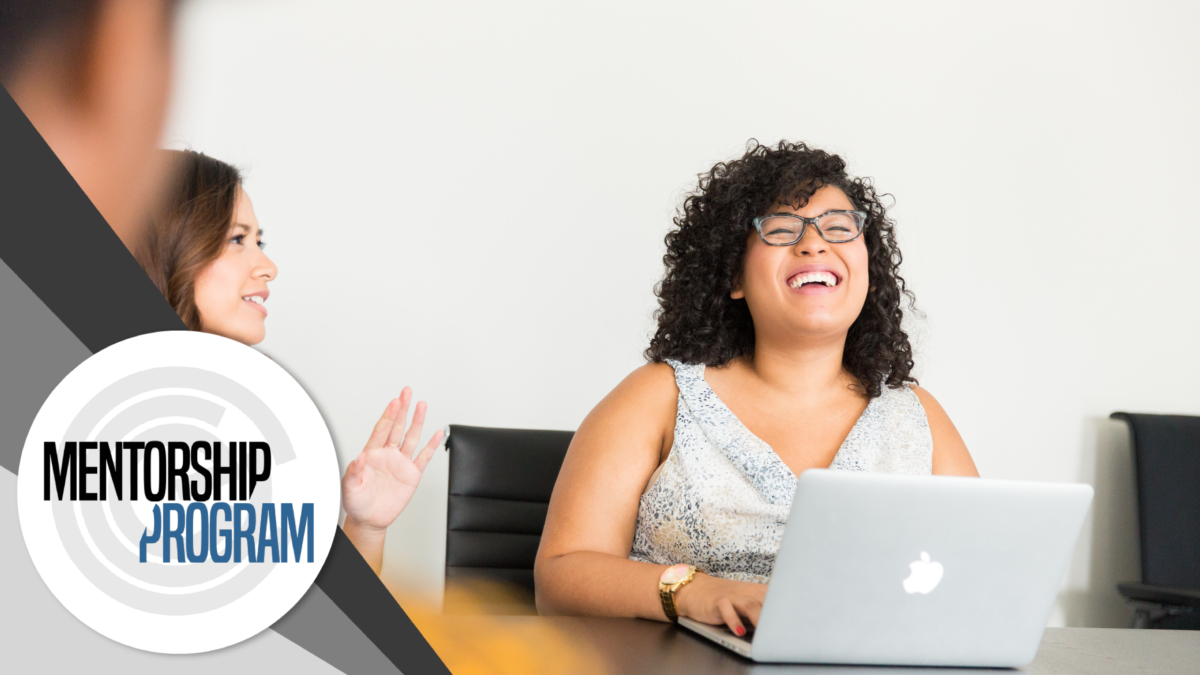
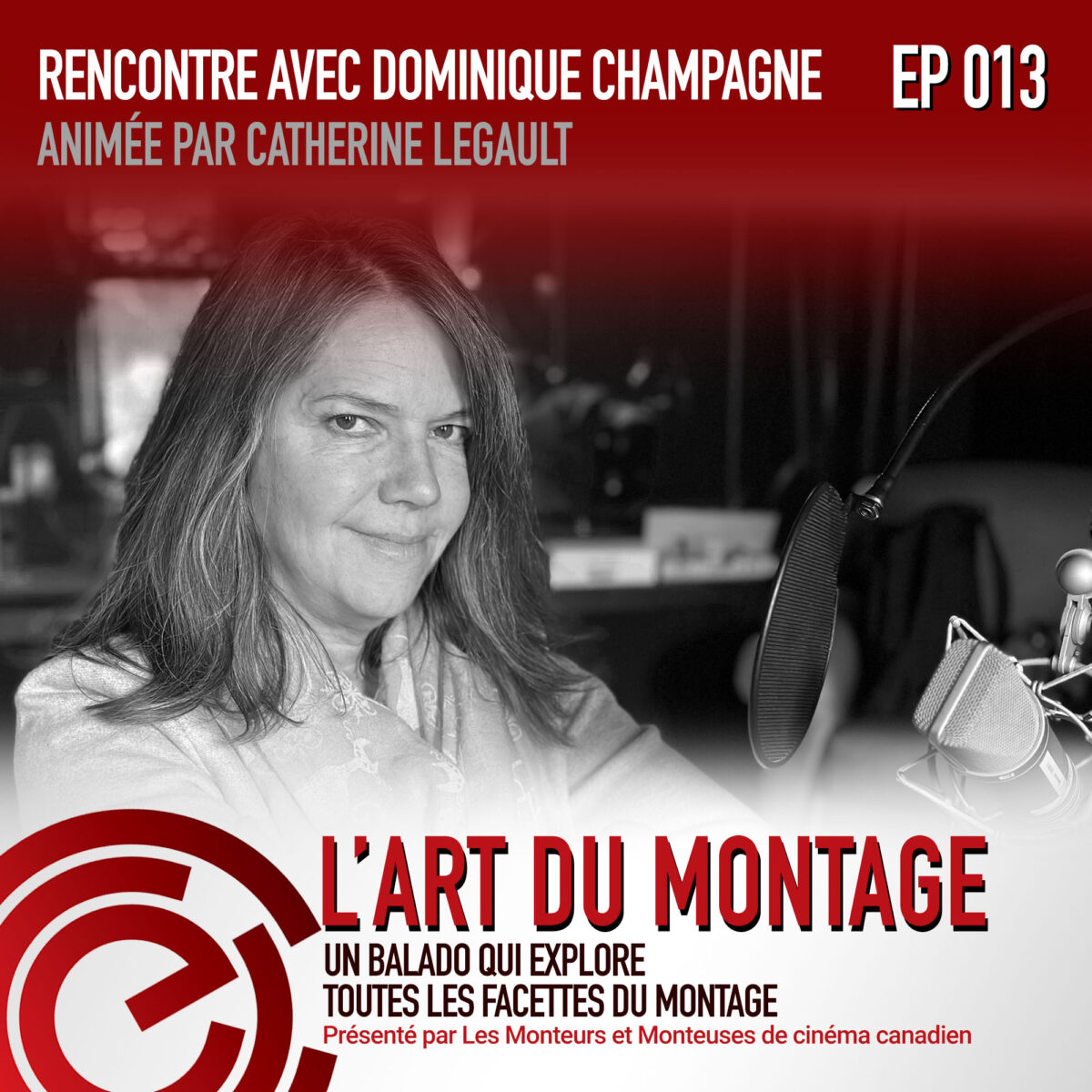
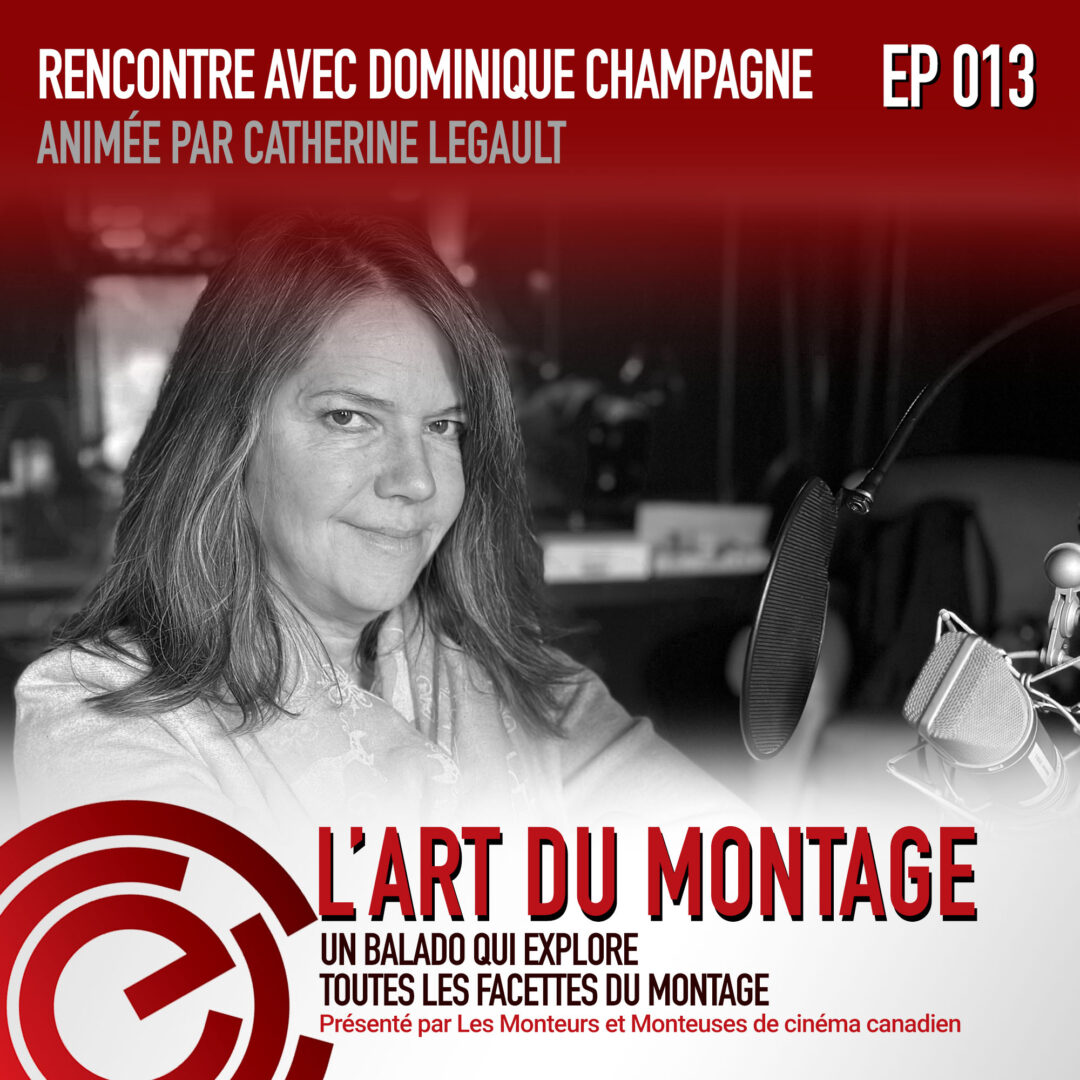

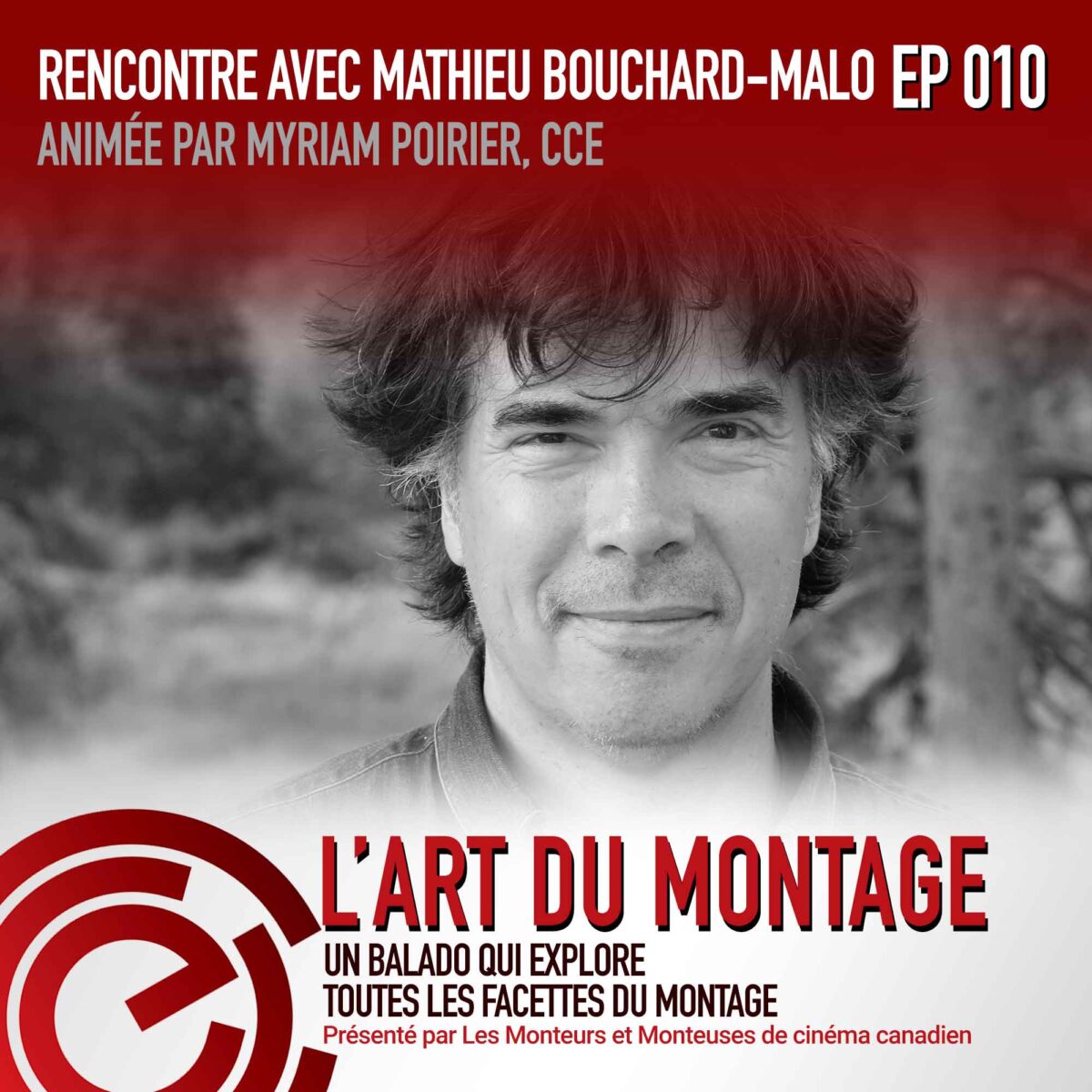
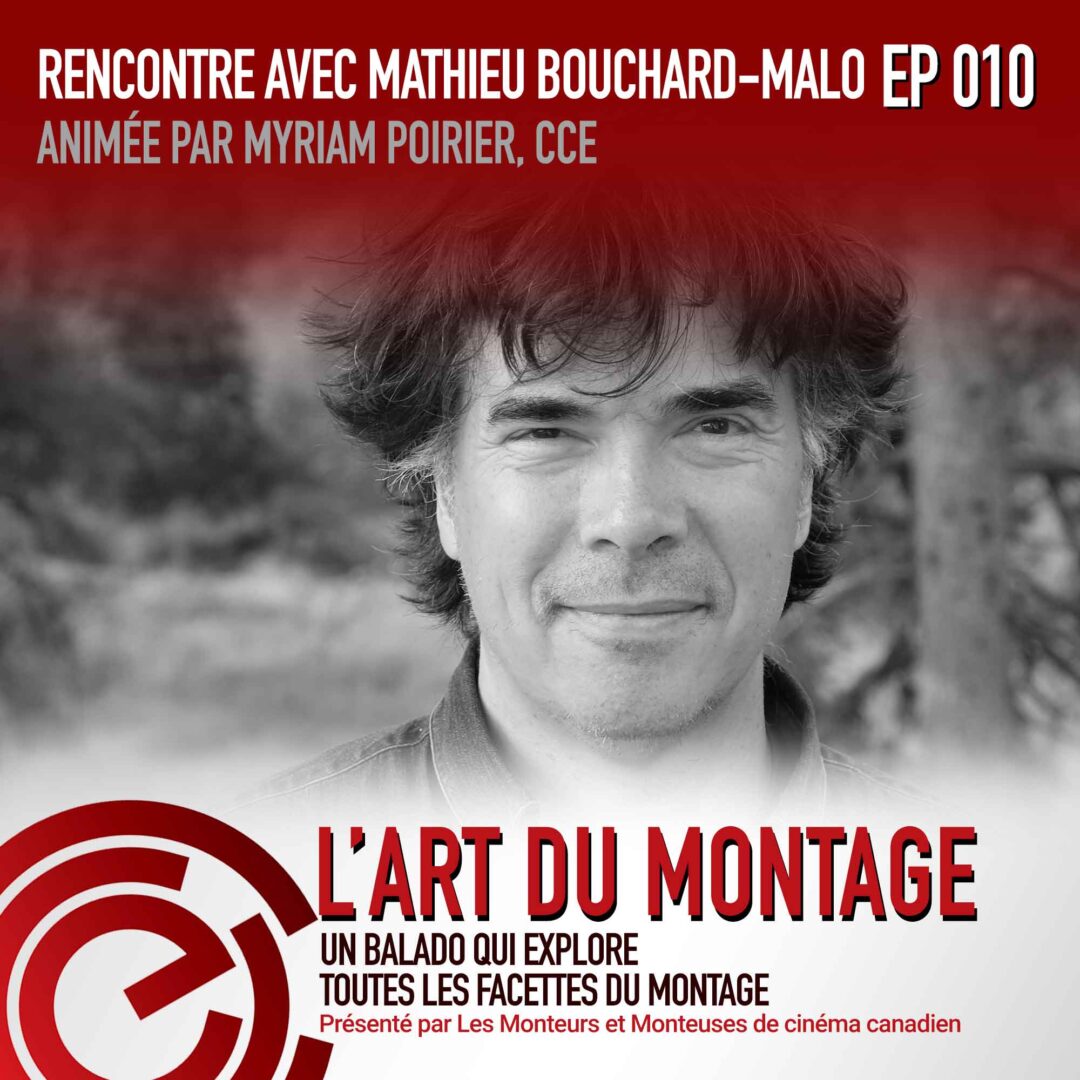
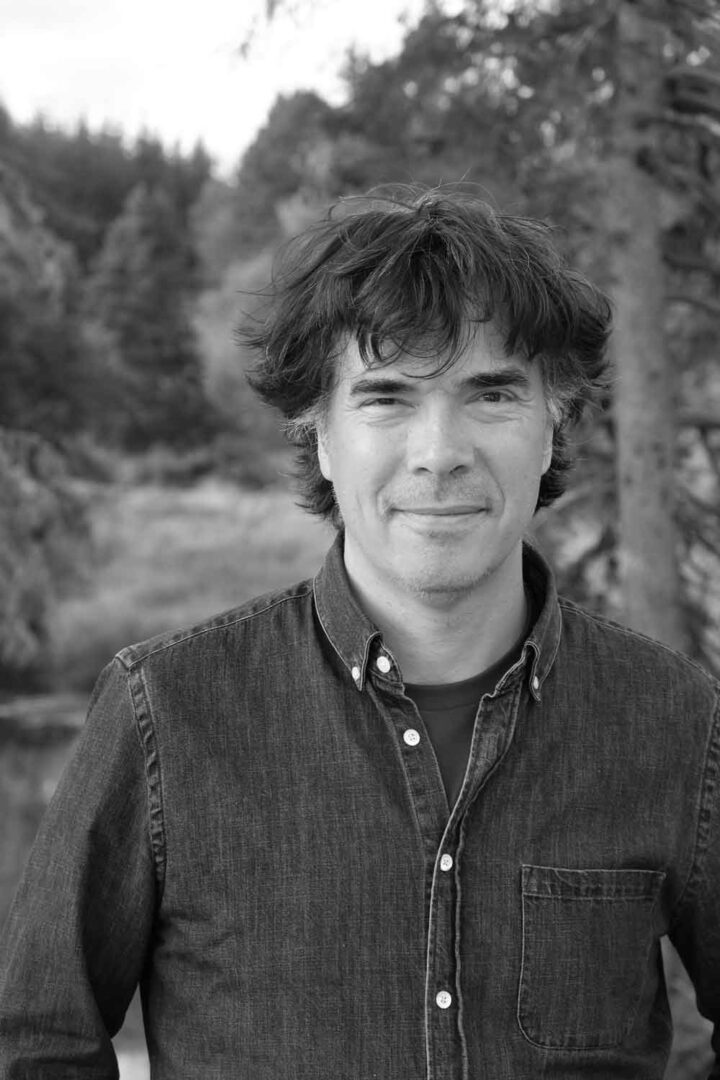

 If someone had told me two years ago, when I got accepted into the CCE Mentorship program, that I would gain a mentor who wholeheartedly believed in me, who encouraged me often, and who was completely dedicated to my success, I would have said, “I’m not sure that kind of mentorship exists.” At the time, the most I was hoping for was someone who would let me sneak into their edit booth and watch them cut for a couple days or who might be willing to review my work and give me a few pointers. I figured if I received even that much guidance, I would be lucky and grateful for it. Never in a million years would I have expected a relationship that would dramatically impact my career. That is, until I met Michèle Hozer.
If someone had told me two years ago, when I got accepted into the CCE Mentorship program, that I would gain a mentor who wholeheartedly believed in me, who encouraged me often, and who was completely dedicated to my success, I would have said, “I’m not sure that kind of mentorship exists.” At the time, the most I was hoping for was someone who would let me sneak into their edit booth and watch them cut for a couple days or who might be willing to review my work and give me a few pointers. I figured if I received even that much guidance, I would be lucky and grateful for it. Never in a million years would I have expected a relationship that would dramatically impact my career. That is, until I met Michèle Hozer.
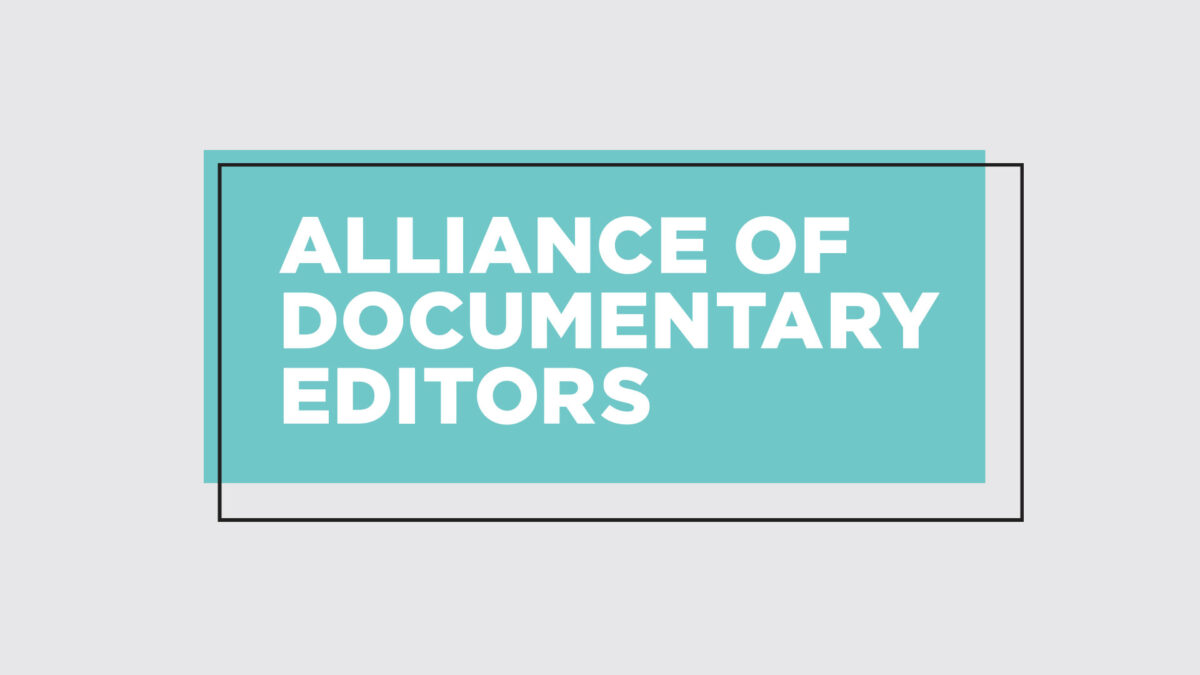
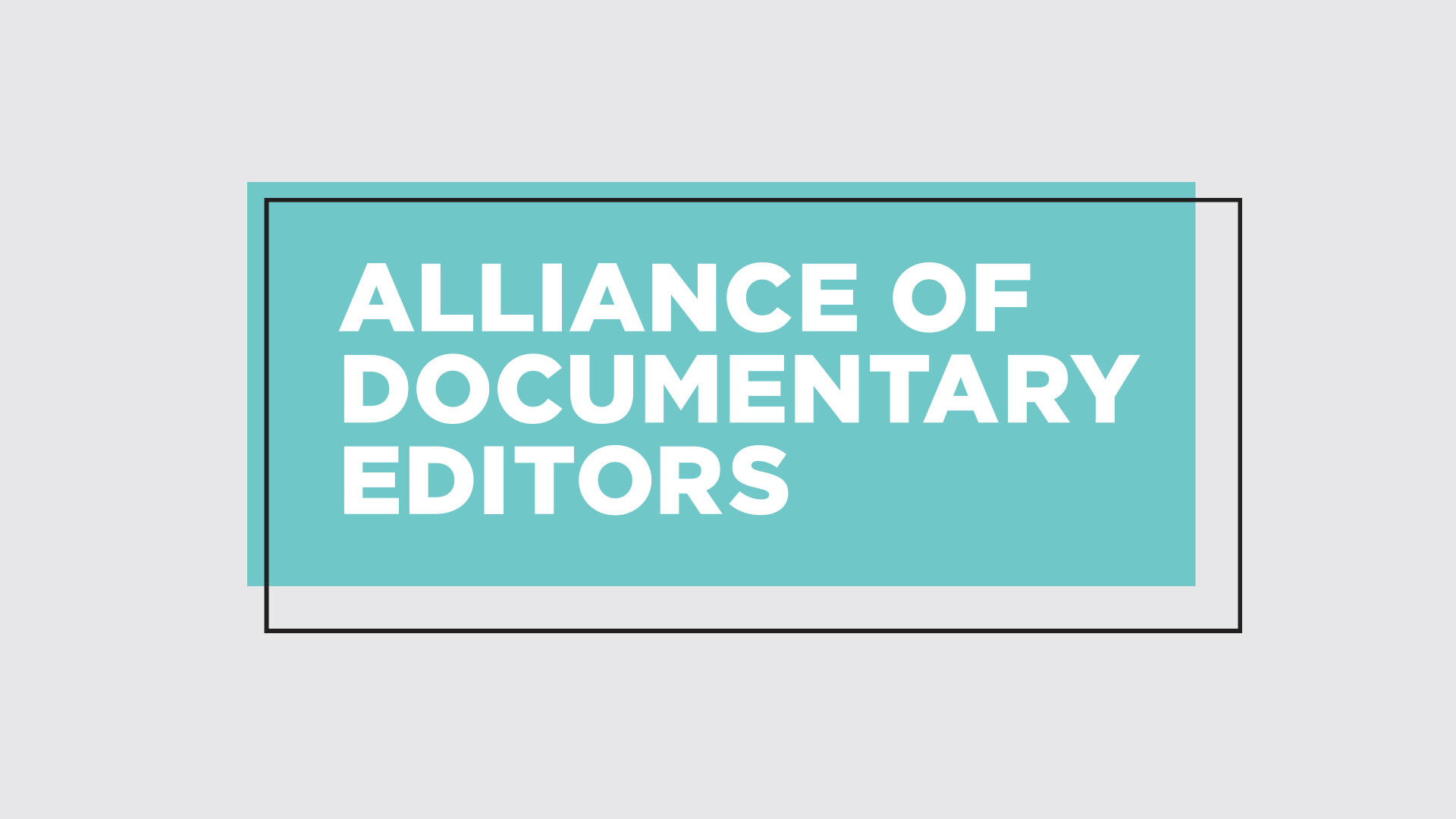



 Catherine Legault is an award-winning film editor and filmmaker. She navigates between documentary, animation and fiction, and her work is appreciated for its fluidity and structural sophistication layering different levels of meaning throughout.
Catherine Legault is an award-winning film editor and filmmaker. She navigates between documentary, animation and fiction, and her work is appreciated for its fluidity and structural sophistication layering different levels of meaning throughout. Aisling Chin-Yee is an award-winning filmmaker based in Montreal, Canada, and Los Angeles, California. Aisling was named one of Canada’s Rising Film Stars by Now Magazine 2019. Her feature film directorial debut, THE REST OF US, starring Heather Graham (BOOGIE NIGHTS, THE HANGOVER), Sophie Nélisse (THE BOOK THIEF), and Jodi Balfour (THE CROWN) premiered at the Toronto International Film Festival in 2019 and has released widely around the world.
Aisling Chin-Yee is an award-winning filmmaker based in Montreal, Canada, and Los Angeles, California. Aisling was named one of Canada’s Rising Film Stars by Now Magazine 2019. Her feature film directorial debut, THE REST OF US, starring Heather Graham (BOOGIE NIGHTS, THE HANGOVER), Sophie Nélisse (THE BOOK THIEF), and Jodi Balfour (THE CROWN) premiered at the Toronto International Film Festival in 2019 and has released widely around the world. Chase Joynt is a director and writer whose films have won jury and audience awards internationally. With Aisling Chin-Yee, Chase co-directed NO ORDINARY MAN, a feature-length documentary about jazz musician Billy Tipton, which was presented at Cannes Docs 2020 as part of the Canadian Showcase of Docs-in-Progress.
Chase Joynt is a director and writer whose films have won jury and audience awards internationally. With Aisling Chin-Yee, Chase co-directed NO ORDINARY MAN, a feature-length documentary about jazz musician Billy Tipton, which was presented at Cannes Docs 2020 as part of the Canadian Showcase of Docs-in-Progress.
